THE COCA LEAF ROUTE
JUNE 2015
organized and presented by the Association ‘Friends of the Coca leaf’
Haantjeslei 213
2018 Antwerpen – Belgium
[Coca2009@encod.org
>Coca2009@encod.org]
www.amigoshojadecoca.org
Facebook: Amigos de la Hoja de Coca
Tel +32 495 122644
Between June 3 and 30, 2015, a delegation of the European Association ‘Friends of the Coca Leaf’ toured Bolivia and Peru with a specific mission: to find people willing to develop common strategies to establish a dignified and sovereign export to the international markets of the coca leaf in its natural state or traditional derivates, within the framework of fair and sustainable trade.
The Coca Leaf Route included visits to various regions of coca leaf production, meetings with producers, union leaders, local authorities, academic experts, businessmen, parliamentarians and government representatives. During these meetings we looked for answers to the following question:
What are the obstacles to decriminalize the coca leaf internationally and how to overcome them through the collaboration between producers and consumers from different countries?
This report presents the experiences and findings of the route. After a summary of our experiences in chronological order, it includes a list of conclusions and recommendations and ends with a personal assessment of some members of the delegation.
The Coca Leaf Route has been an inspiring experience for all members. The warm welcome and positive response we experienced in each of the places we have visited convinced us even more of the importance of our common goal. We remain eternally grateful to all the people who made time, effort and space to meet us, especially Dionicio Nuñez and Serafín Andrés Luján.
The contacts established during the Route will serve to take further steps towards the international decriminalization of coca leaf. We hope to return soon with good news.
Beatriz Negrety (Belgium) – Brenda Perez (Mexico) – Erec Ortmann (Germany) – Gaby Kozar (Austria) – Joep Oomen (Belgium) – Maria Huamani (Peru) – Mauricio Mamani (Bolivia) – Olga Viza (Peru) – Sarah Schwirten (Germany)
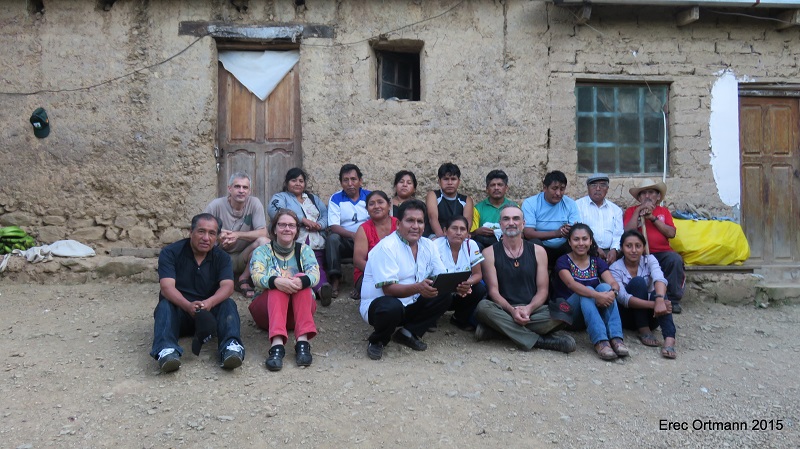
Summary of experiences
June 3 and 4 La Paz
At noon, we meet all participants of the Coca Leaf Route for the first time in Café Torino, in the center of La Paz. As we introduce us to each other we take our first ‘mate de coca’ which is useful to reduce the ‘altitude sickness’. There is not much time for preparation. We have received a first invitation of the Federation of Producers from La Asunta to participate in a rally on June 4, concerning the new ‘Coca Law’ which is being prepared in parliament this month. Brenda decides to leave for La Asunta, a ten hours drive, while the rest stays in La Paz and visit the laboratories of ICORI, in the south of La Paz.
ICORI is a family business that produces coca leaf derivates. Its most famous product is a candy made of an extract of coca leaves and honey. Sucking it gives the feeling of chewing a ‘Picchu’ (local term for traditional consumption). In order to export them legally, the cocaine alkaloid should be removed from the leaves, and this would require special permits. It is also considered that this would reduce or eliminate the medicinal value of the product.
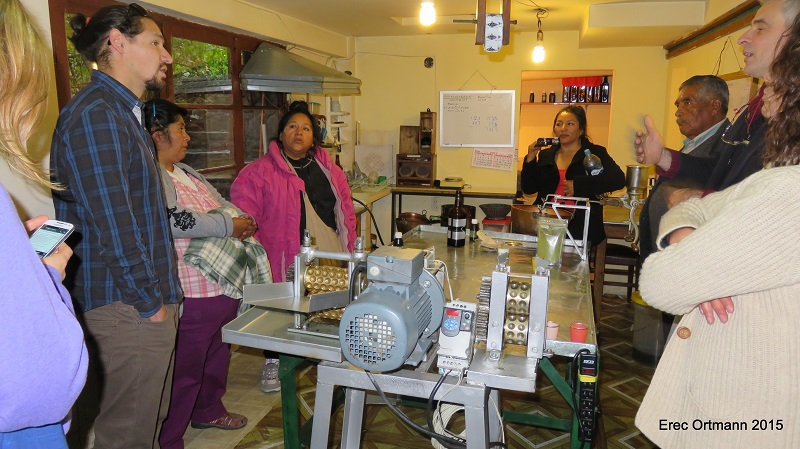
The next day we visit the Coca Museum, in the
Linares street in the tourist district of La Paz. We are received by the manager, Sdenka Silva. For an hour and a half she guides us through all sections of this museum, that although being one of the smallest in the world, offers a true wealth of historical, anthropological and technical data on the coca leaf, from its use in pre-colonial times until the present time.
The coca leaf has played a crucial role that has enabled the Andean culture, based on reciprocity (balance between men and nature), to survive the centuries of domination by an economic model based on the exploitation of men and earth.
A beautiful exhibition of drawings and photographs is complemented by scientific data produced by various investigations. Among others a study of the Bolivian Institute of Altitude Biology (IBBA), realised in 1995 together with the French Ministry of Foreign Affairs, which showed among others that coca is not a stimulant in the strict term of the word. It is an energizer, because instead of exhausting the body, it feeds it.
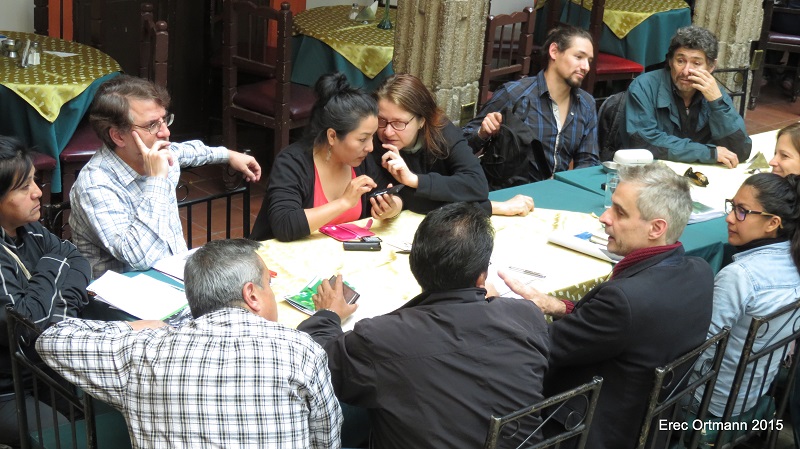
In the afternoon we meet with Alejandro Revilla and Gregory Ahaurian of Interandean Institute of Coca Science). They present their initiative to achieve the status of GRAS (Generally Recognized As Safe) for a new product based on cacao and coca.
GRAS is the term used by the FDA (the US Agency for regulating the market of Foods and Drugs) to define the products accepted for marketing in the US. The initiative relates to a new invention, according to Gregory a revolution in the consumption of chocolate in the world, an annual business of 100 billion USD. It turns out that adding a small amount of coca to cacao takes away the bitter taste, and makes it consumable without the need to add sugar and fat, which happens today in the production process of chocolate. Therefore chocolate mixed with coca leaves may convert an unhealthy product (sugar and fat produce diabetes and obesity, two of the most costly diseases to Western societies today) in a medicine.
According to Gregory, it could be argued that this product deserves the term GRAS (or its equivalent in the European Union), and thus may open the door to other traditional products of the coca leaf. His idea is to convince US investors to invest millions of dollars in a legal action to convince the FDA that it should accept the application. We discussed at length with him, especially on the question of how organizations of coca producers would participate in the initiative and how they would benefit if they would succeed. We made it clear that our support to it would depend on the definitive answer to this question.
5 and 6 June Coroíco
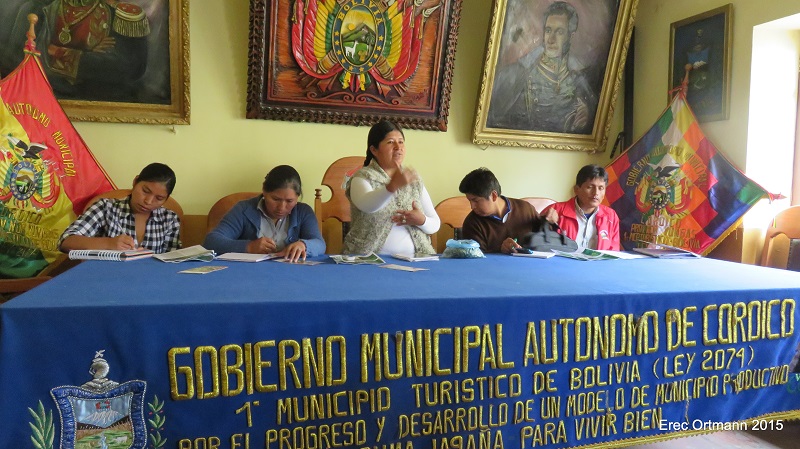
After a trip through beautiful landscapes, we arrive at the city of Coroico where we are received by the vice mayor and some councilors of the municipality, who want to know everything about the possible scenarios for collaboration in order to obtain realistic perspectives for the export of the coca leaf. Coroico is not only an important center for coca production but also for tourism, with a high concentration of hotels and restaurants. It is the final destination of some famous sightseeing trails such as the Inca Trail (pedestrians) or the Death Road (cyclists). We suggest the possibility of developing the Route of the Coca Leaf as a concrete program in which the tourist is offered to meet both the natural and cultural resources of the area as well as the life of a coca producer, the process of cultivation to consumption etc. .
In the afternoon we visit the Coca Wasi Centre (House of the Coca Leaf ), some 5 kilometres out of Coroico. This center has been built by two physicians, Dr. Jorge Hurtado and Dr. Roxana Miranda, in order to show the world that the answer to the war on drugs is to cultivate coca in an ecological way such as it has always been the case without using chemical pesticides, insecticides or fertilizers.
Coca Wasi is located at the foot of some hills covered by wachus (terraces built especially for the cultivation of coca) that are several centuries old. It is meant to be a training center for organic farming for the neighbors, and also for students or others who want to know more about coca cultivation. They can come to live in the center a few weeks and help with the work on the farm. The center can be contacted here.
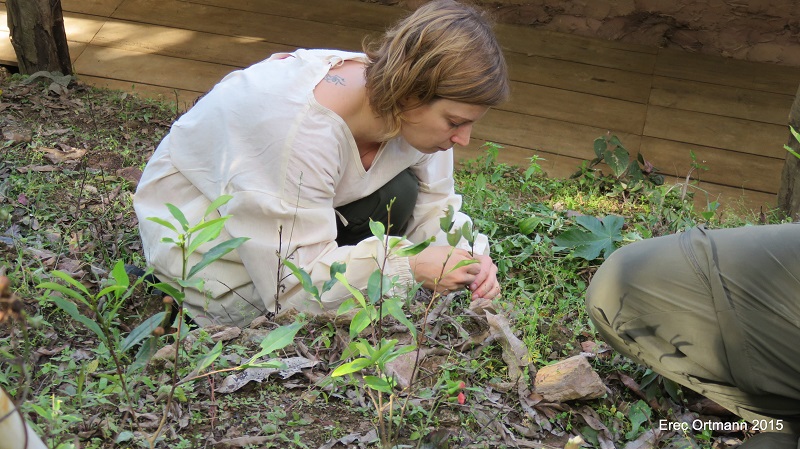
We participate in the ayni (communal work) weeding and harvesting a small part of the land. We learn that coca cultivation is very labor-intensive, and that the profit margin for the producer is very small.
Coca Wasi also houses a museum about the history of drug prohibition and the real interests behind it. Will the story end with world domination by companies like Monsanto who want to monopolize the market for seeds – because who controls the seeds controls everything? Or will humans find their balance with nature in the access to natural resources such as the organically grown coca leaf ? Coca Wasi leaves the option open to its visitors.
At night we meet with some neighbors of the center and discuss the possibility of coca cultivation to again become entirely organic, without using chemicals. The question of how to ensure a steady market and a decent price immediately arises.
June 7 and 8 La Asunta
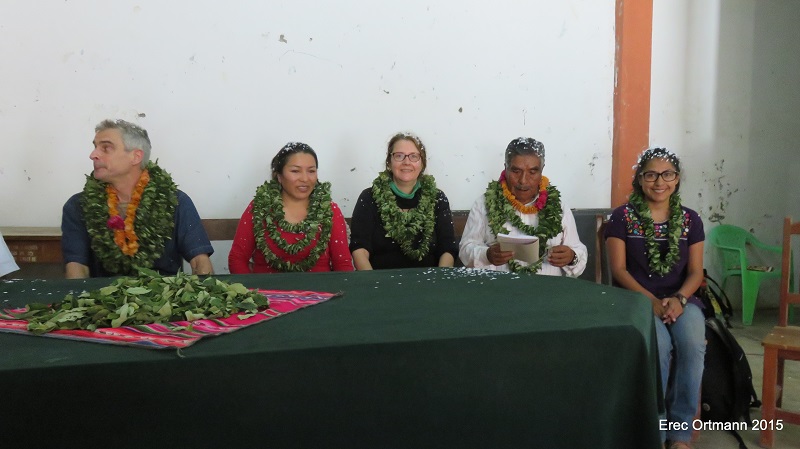
We wake up early to take the road to La Asunta, where we we are received by Dionicio Nuñez, a peasant leader, former vice minister of coca in Bolivia and currently international activist. After a strengthening breakfast at his home we are off to the city hall of La Asunta, where we are received by about 100 people, representatives of several communities of coca producers, as well as by members of the city council. We are received like stars, with a garland of coca leaves and flowers, nice words of welcome from the mayor and applause for the purpose of the mission.
In the afternoon we visit some producers. A typical coca grower family lives as follows: humble, no luxury, but with a natural supermarket around: fruit trees, chicken, clean water, coffee and coca. We meet Don Victor, who has decided to grow 100% organically. It means he earns less than when he would use chemicals, yet he has a clear conscience: there is no poison in his product nor on his land.
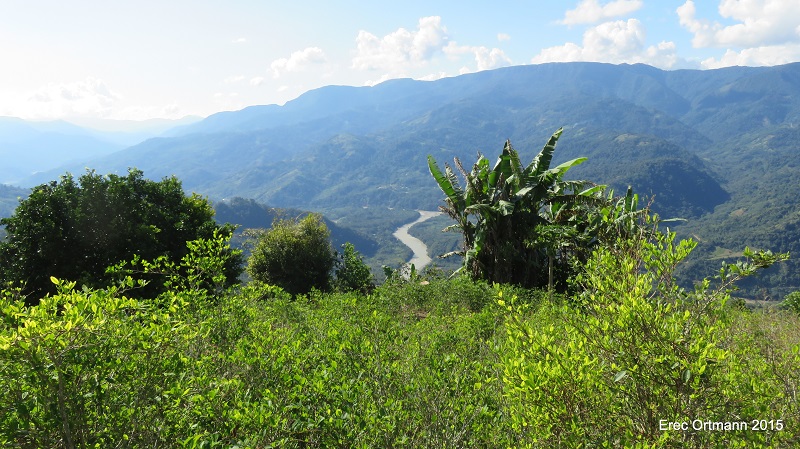
We make many photographs and films, enjoy the mandarins offered by Don Victor, dance in the yard and then return to La Asunta, wondering why there is not yet a Bolivian association that defends the rights of consumers who want to also have a clean and organic product, although they may have to pay more …
The next day we are accompanied by Raul Choque of the Jatunsacha project of the United Nations, on a visit to plots of coca growers around La Asunta. Jatunsacha is dedicated to promote reforestation and organization training in order to produce in an environmentally friendly way without harming nature. It is funded by the German and French cooperation.
The first visit is the lot of Dona Claudia, who shows us that planting Mara trees within the coca field is a natural source of insecticides, fertilizers and money. Mara leaves help prevent insects, which do not like their smell; when they fall they serve as nutrition for the roots of the coca bush, and eventually the trees will serve as timber when they can be cut after about 30 years.
We then visit the land of Don Demetrio, who is just burning weeds in a field where he has planted tangerine combined with Mara trees.
At home he shows us he has been making biol, a natural insecticide made from kitchen scraps and excrements from chicken and cows. He uses the biol to spray the leaves of the plants in order to prevent ulo, the most common bug that attacks the coca leaf.
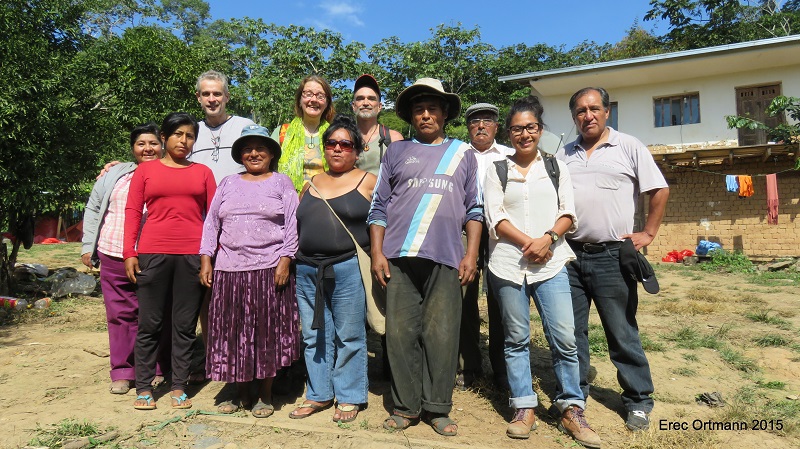
Finally we visit the community of San Antonio, in a very inaccessible region due to the lack of roads. Only recently a vehicular bridge has been installed over the river. Before the residents of San Antonio had to transport their harvest and purchases by shoulder over a footbridge or even by canoe or with a kind of cable between the river banks in which one can hang to move from side to side. So in San Antonio courageous people are living…
We catch the neighbors of San Antonio just as they are doing community work, cleaning the roadside weeds. When we speak of our mission: to open the market for coca leaf in Europe, we get many questions, getting to the heart of this proposal: that the process of converting to organic farming requires a transition process that lasts 3 years, accompanied by professionals. Growers can not start producing large quantities if there is no market that pays them a better price than the conventional; at the same time they should be prepared for being able to meet the demand, in case the market for organic coca starts. If not the market will look for other places to be provided.
June 9 and 10 Irupana
We follow the route to Irupana, passing through the stunning mountains of Los Yungas, in the pick-up that was facilitated by the Board of Municipalities of the Yungas of La Paz, and driven by Technical manager Don Victor Hugo Aliaga, who tells us several episodes from the rich history of this region.
Several roads in the Yungas have been built by Paraguayan prisoners who were captured in the Chaco War. Many bridges have been delivered by the British army that were used in World War II (the famous Bailey bridges – easily assembled and disassembled). In the afternoon we visit the archaeological ruins of Pasto Grande (two hours from Irupana) – also called the Bolivian Machu Picchu Bolivia. It is a cultural heritage that should be taken care off in a better way: currently it is covered with crops and waste.

The next day we are received in the city hall of Irupana by the mayor and several representatives of the federations of farmers, who tell us that for this region, coca leaf is the basis for maintaining the household economy.
We respond that we want to fight to open a legal market in Europe for the coca leaf and its traditional products. At the moment it also arrives via clandestine routes: in stores of Latin American migrants in Spain coca leaves are sold for 100 euros (600 bolivianos) for half kilo a kilo of leaves, which costs 20 bolivianos in Bolivia. The challenge is to make it arrive legally and this requires proof that the coca leaf is food, health and culture. If we distinguish the coca leaf from the raw material of the illicit market it should be treated according to the sanitary standards, and must be organic.
We are told that there have been efforts to switch to organic, but they have stopped. There must be a separate market for consumers to tell the difference. And it is important that there is state support for certification; It is quite expensive to guarantee certification every year and in addition some certification organisations are afraid that this would affect their international reputation.
11 june La Paz

June 11th is a day of press interviews – with the support of the Board of Municipalities of the Yungas of La Paz contacts have been made to several television and radio channels of La Paz, who invited us for an interview. From 7 AM in the morning a series of interviews start with TV channels 4 and 13, Radio Erbol and Radio Fides. We also travel to Cochabamba, where we arrive during the night.
June 12 Cochabamba
Today is the day of the seminar “Coca Digna – how to release the coca leaf its house arrest” in the cultural center La Troje of Cochabamba.
After welcoming the 30 participants, the workshop is introduced by Milan Sanda, representative of La Troje. He states that in order to achieve our goal we need to analyze all the arguments in defense of the coca leaf as well as the counter-arguments and not to let ourselves be tempted to simplify the debate with slogans to which we can all agree but which do not lead to any concrete progress.
Sarah Schwirten from Germany relates the experience of the opium poppy, which is also prohibited by the 1961 Convention. However there is a market for poppy seeds, which is used to manufacture legal products.
As is the case of the coca leaf, poppy production requires a lot of work, it is a robust and easy to grow plant, its traditional use is legal and it has legal commercial options for medical and scientific purposes – and without alkaloids for culinary purposes. In countries such as Turkey and India there is a legal market with an infrastructure for the extraction of alkaloids, which has resulted in the development of local economies. The question is whether this experience is transferable to the coca leaf, following the principles of fair trade: community organization, fixed and stable prices, prohibition of child labor, no discrimination and sustainable cultivation.
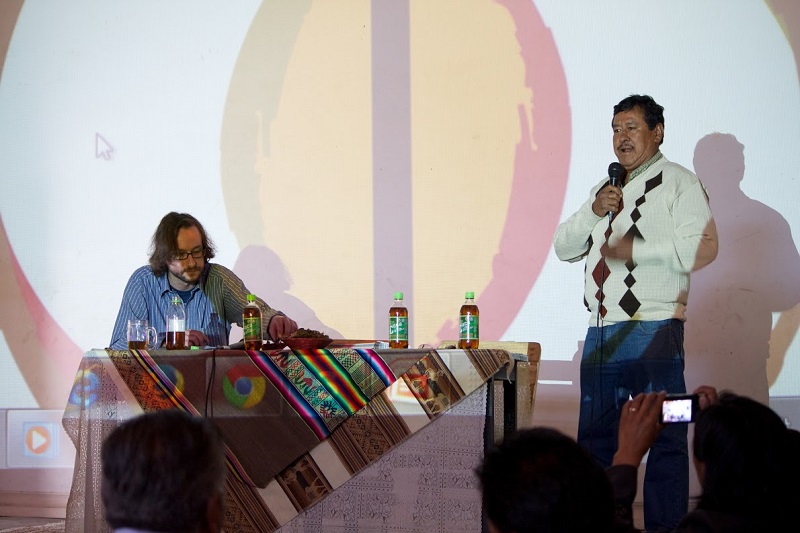
Then Don Albino Paniagua speaks, national director of the DIGCOIN (national direction of coca control), and also coca producer from Chimoré. He explains the long process that began in Bolivia with the anger caused by the war against coca. Since 2006, the coca producer movement has reached the government, promoting international revalorization of the leaf, a national strategy promoting industrialization of coca. Although the proposal does not involve large quantities, it is difficult to obtain international recognition for it. Bolivian companies have clashed with the interests of big pharmaceutical companies that want to maintain its house arrest.
To export with dignity, studies are needed, laboratories for certification that do not exist in Bolivia, pilot plants to extract alkaloids and organic farming cooperatives. The other big problem is that many farmers have become consumerist, they easily use chemicals that poison the land, coca has become a product to sell, not to consume.

Ing. Abdon Siles of EICOBOL (Coca Industrialization Company in Bolivia, EICOBOL) presents the experiences of several companies that have tried to promote the industrialization of the coca leaf for lawful purposes; many did not make it due to bureaucratic obstacles. Eicobol produces several coca-based energizing and tonificating products, and has made progress with Coca Colla, an energy drink that sells well in Bolivia. It can compete with several international coca derivatives, with and without alkaloids, such as Red Bull Cola and Coca Cola. Most of its customers are in Santa Cruz where there is no traditional leaf consumption.
According to studies by Japanese laboratories Coca Colla has high energetic and medicinal properties. Swiss laboratories have established that the alkaloid content is 5 ppm, when thousand per million (0.1 percent) are authorized. But Coca Colla still can not be exported.
A discussion takes place. Why can Coca Colla not leave the country yet? Who is pulling the strings here? Dionicio (exviceminister of the coca leaf) makes a gesture of self-criticism: there is not enough support from the state, there should be a more assertive strategy amongst entrepreneurs and government, and producers. On the other hands, export products should have detailed information on the product and the content of coca leaf. We decide to bring some Coca Colla bottles to Europe and contact enterprises that distribute energizing drinks.

Then, Fernando B. Salazar of the University of Cochabamba intervenes explaining that the situation of coca growers is complicated. It is the poorest people who are dedicated to produce coca and politicians do not take them seriously. Now in Bolivia it is assumed that the people are in power, it’s time to maintain that the coca leaf is culture, medicine. Growing coca should be dignified. At this time, growing technology respond to the theory of the Green Revolution of the 70s: in those days many fields in the Chapare were owned by military who introduced chemicals to increase production. Now there is a debate among producers, some want to start growing organic coca but many oppose fearing that the price of the ‘conventional’ coca will fall. Even banned chemicals are used.
A pact between government and producers, with society, for Bolivia and for the world needs to ensure environmentally friendly production, with government control, cooperation with universities, transfer of technology on storage infrastructure and methods, suitable markets and decent prices, entrepreneurs operating from below. It is a gradual process but we must start it. The technology is not new and has existed since the ancestors, so technological packages can be made for cultivation, storage and transport. But the government must act. In this sense it is extremely worrying that the Vice-Ministry of Social Defense is erradicating coca in the region of Yungas Vandiola, where traditional and organic coca is being grown. It appears to be a political issue: efforts to make a local law to declare coca heritage of the city were blocked by the MAS.
Dionicio Nuñez speaks, the former Vice Minister of Coca, who explains that since 2006 the government is working for international decriminalization. Together with the proposal for the recovering of the access to the sea it is one of the bases for Bolivian diplomacy. But he does not agree completely with the government. He is not in favor of limiting hectares. It is a top-down strategy, forcing the producer to exploit their land and do everything to increase profits. He proposes experiences of lawful uses of other illegal plants such as marijuana and opium.
He explains the organization of the global summit on drug policy in 2016, UNGASS in New York, where two forces oppose: some want status quo, others want change. The universal drug law must disappear, it must be adapted locally. He announces a series of meetings for producers of illicit plants are prepared before the 2016 UNGASS – as governments do not defend their interests.
Mauricio Mamani tells about the experiences of a technical proposal for international depenalization which was developed with government representatives of Colombia, Peru and Bolivia at an event in Santa Cruz in 2012. The event instructed the Ministry of Foreign Affairs of Bolivia to take it to Vienna but this never happened. His conclusion is that there must be enemies of coca within the government apparatus in Bolivia too.
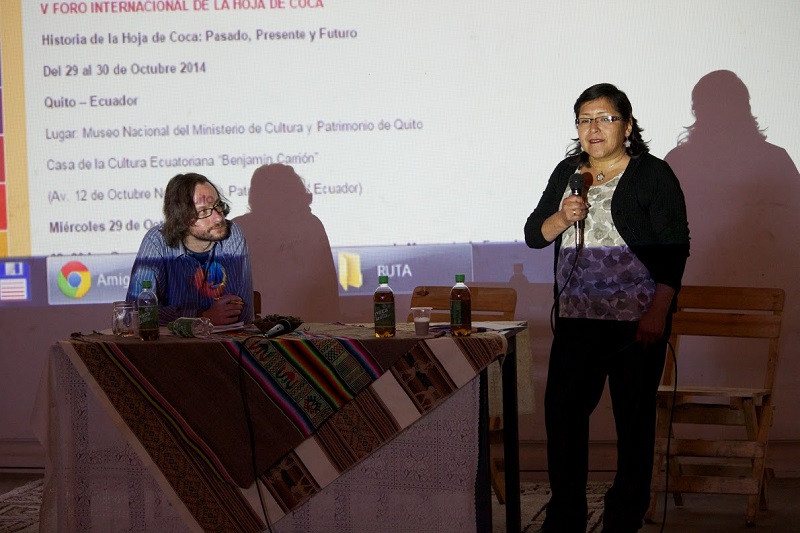
Then Congresswoman Brigida Virginia Quiroga speaks, president of the Coca Committee of the Chamber of Deputies. She explains that parliament is in the process of adopting a new law on coca, which should replace the previous 1008 law, that was imposed by the United States in 1988. Currently 20,000 hectares have been established for legal coca cultivation, 12,000 in Yungas, 7,000 in Chapare, and 1,000 hectares in other regions. But the opposition maintains that much of the crop goes to the illegal market. This time the producers themselves will take care of the law, through their unions. She argues that the promotion of export should have a particular chapter in the law, as well as scientific research to ensure that legal requirements are met. It is a long and arduous work.
Brenda Perez tells the experiences of her country, Mexico, a transit country suffering the problem of brutal drug trafficking in recent years. It shows that the drug war is used for geopolitical strategies that increase violence and expresses the hope that the diplomacy of coca in Bolivia will help her country to achieve a solution to the problem.
Joep Oomen presents the proposal of the Friends of the Coca Leaf: import coca leaves through a system of fair trade, in an act of civil disobedience to challenge the law and cause a trial in Europe. In this trial the defense arguments are to be presented to justify the act as a gesture of respect for the rights to health, culture and development of the cultural heritage of indigenous peoples.
In 2012 we have already tested an export system of coca leaves by sending small packets of 150 grams of leaves by mail to members of the association in Europe. In 2013, these shipments were stopped by the Bolivian post company under pressure from the German airline Lufthansa, who threatened to block all Bolivian shipments to Europe if they would continue transporting coca leaves. This is why we now present the plan of the Chasquicocas: people who would carry packets of coca leaves for members of the Association in their personal luggage and then distribute them in Europe.
The event finishes with the commitment to consider all participants as an impulsory committee of an international organisation to defend the coca leaf, which will carry out the principles expressed in the seminar.
In the evening we participate in a television program on Channel 21 in Cochabamba.
June 13 to 16 – Chimoré
We drive to the Chapare (Tropical Region of Cochabamba), accompanied by Don Albino Paniagua. The first stop is Paractito where we are received at the Assembly of the Central – a meeting with approx. 500 men, women and children. We make our presentation and receive applause, quite an experience. Then we proceed to the MoonLight House in Chimoré – belonging to Ing Marcelo Pinto, an agroforestry engineer who is part of an international network of organic farms.
He accommodates us during our stay in the Chapare.

We speak with don Victor Cadima, director of the Board of Municipalities of the Tropics – bringing together the municipal councils of all towns in the Chapare: Villa Tunari, Shinahota, Chimore, Puerto Villaroel and Entre Rios.
According to Don Victor there have been several setbacks in efforts to promote organic coca production. He thinks that certification is not a problem, this can be done by the Ministry of Rural Development and Land. But producers do not want conditions, it reminds them of alternative development programmes which is why this proposal has no future. Rather than forced eradication what exists now is community control – a system that leaves the task of enforcing the ‘cato de coca’ (peasants in Chapare are only allowed to grow coca on a limited land of 40 x 40 meters) to the peasants’ unions. Any development should be complementary to coca, which represents a kind of natural ‘bank account’ that assures the producer an income every three months.
In the evening we visit an assembly of the Federation of Peasant Women Bartolina Sisa of the United Centrals in Sinahota – a three-day meeting with women taking care of the order with sticks so that participants can not sleep. We intervene with a clear message proposing the need to convert coca production to organic agriculture, and receive many positive reactions.
The next day we visit the field of the neighbor of Don Marcelo and pass by the Federation of Chimore where we have a short but pleasant meeting with the leaders who applaud our initiative. At lunch we meet representatives of the Association of People Affected by the Repression of the Coca Leaf, people who were shot or tortured during the violent conflicts in the Chapare between 1990 and 2003. We interview them on camera to record their experiences.
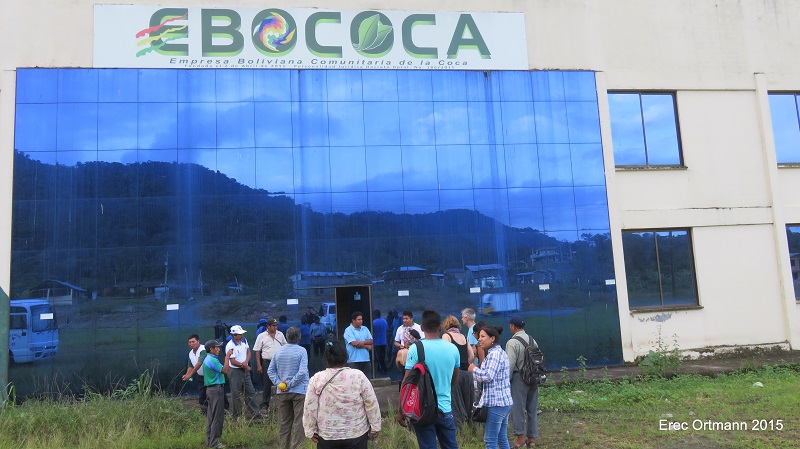
Then we drive to the EBOCOCA factory in Padre Sama where we meet the new manager who says the factory will open in a few months. The factory was built in 2010 and has not worked since.
The problem is the lack of useful raw materials (most of the coca harvest in Chapare is dried and treated badly, and not suitable for traditional consumption), lack of enough floor space to install several items separately (now everything is together in one space), and finally the lack of a marketing plan.
We move to the headquarters of the Committee of the 6 Federations in Lauca Eñe where Richard Pinto, an engineer, presents a project to industrialize the coca leaf to manufacture anesthetics – for which there will be market in many Latin American countries. According to him a Swiss fund would be willing to invest $50 million, and the beneficiaries will be producers.
The next day we are received in the Assembly of Retail Producers of the Committee of the 6 federations in Lauca Eñe. We hear reports of those responsible for controlling the legal marketing of coca leaf and find out that only 8% of leaf production goes to the legal market.
Then we drive to the Casimiro Huanca University in Chimoré. After a reception by students, we speak to the rector and vice-rector, and ask them what the University can do to improve the perspectives of peasants to switch to organic agriculture. It is somewhat disappointing to hear that this is not their priority: there is not one study line on the organic production in the tropics and only one student is currently working on a thesis on the subject coca.
We end the day eating jochi and tatu (wild pigs) in a restaurant and see Bolivia winning 3-2 to Ecuador in the Copa America.
The next day we visit Senda VI where we have a meeting with Don Facundo Zurita, head of the Marketing Committee of the 6 Federations.
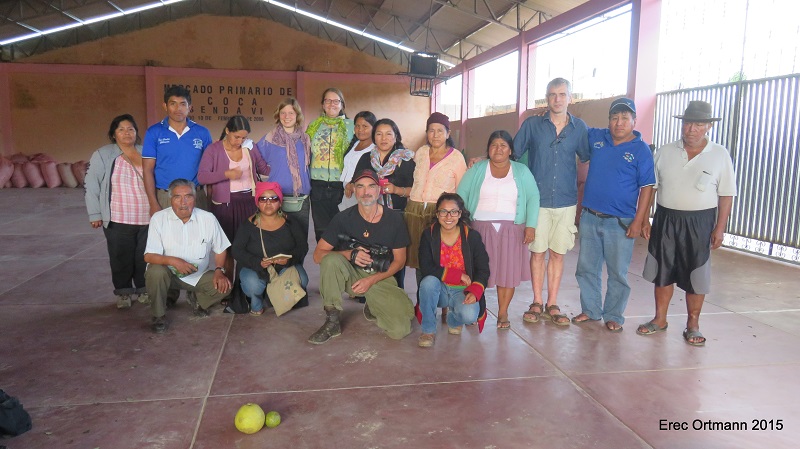
According to Don Facundo the problem is that the producer must sacrifice to convert to organic cultivation and enforce a safe treatment of the leaf: the rentability of the land decreases, it means more work and anyway the legal demand market in the Tropics is limited. Of course the people realize that something is going wrong: due to overexploitation of the land (caused by the limitation of the ‘cato de coca’) soils are depleted quickly and the use of chemicals makes it worse. Further damage is being done by the campaigns of companies that sell chemicals, and the fact that the cato regime does not allow variability (to switch from one place to the other one has to to work in stages, the control is very rigid). Also scientific research is required: we suggest the producers that the university should be demanded to accompany this process. The incentive for this conversion must be combined with a secure market, which pass by industrialization and export perspectives. We agree to keep in touch always informing them about our progress.
After the meeting we visit the headquarters of the Central of Senda VI where 3 people died in defense of the coca leaf in November 2001, we make interviews on camera.
Today’s second event is the visit to the Milka dairy in Ivirgarzama, built in 1993 with $8 million as an alternative development project funded by the Swedish government through the UN and implemented by the Gilead church. Since 1997 this operation finished due to the lack of raw materials and market perspectives, so today a ‘white elephant’ remains. We enter to view the machines that are still in good condition. We then return to Cochabamba.
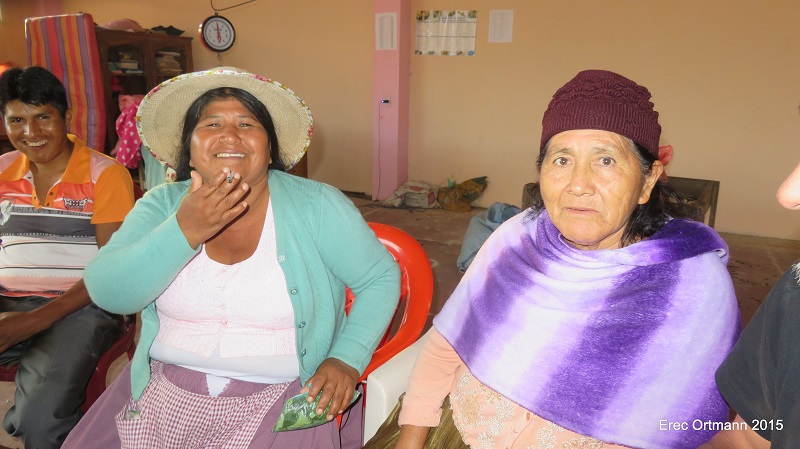
June 17 Cochabamba
Today we split in two: one group visits the Cochabamba prison and interviews a person convicted of the 1008 law. Another group contacts the company Naturaleza, which produces a product called trimate based on chamomile, anise and organic coca and carries some examples to research and consider its import through a network of fair trade organisations in Europe. In the evening we all met with the COLI, a group of academic researchers and activists promote organic coca. We learn among others that to produce 1 kilo of cocaine, 200 liters of chemicals such as gasolin and sulfuric acid are needed, which are then thrown into the rivers.
We also talk to Alex Silva, chief executive of the Federation of Yungas Vandiola, who tells us that although Vandiola produce organic coca, the government considers the region illegal and runs erradication even of the ‘machucocas’ coca trees that are more than 100 years old. We agree with Don Alex that if the Association will again buy coca leaf in Bolivia, even if it is only in a symbolic act, we will always include the three regions: Yungas, Chapare and Yungas Vandiola. In the evening we return to La Paz.
18-20 June, La Paz
In the morning we attend a TV interview in Abya Yala, along with Bridget Quiroga and Dionicio Nuñez. We talk about the new law on coca. The opposition insists on outlawing the production of coca leaf in the tropics. It is an argument for accelerating efforts to open markets for the legal use of the leaf and traditional products.
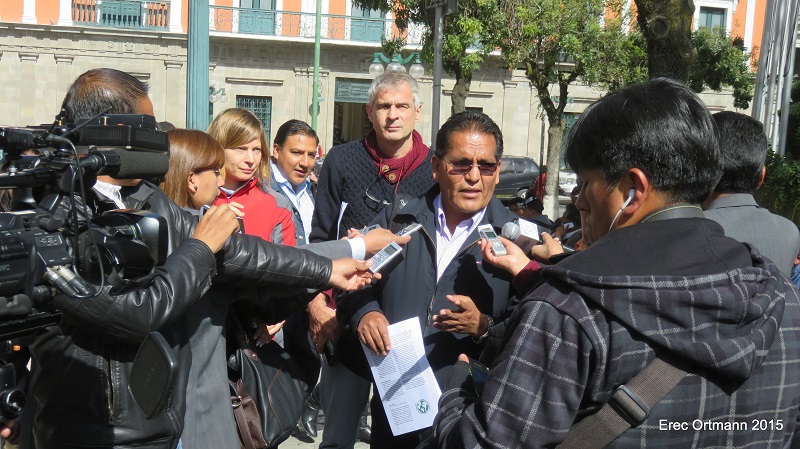
We participate in a rather chaotic press conference on the Plaza Murillo, in front of the Government Palace, and we are invited to the Commission of Indigenous Nations and Peoples of the House of Representatives, where we present the need to cooperate with the Bolivian government in following up the Coca Leaf Route, regarding efforts to open markets for legal use of the coca leaf worldwide (the Chasquicocas). In principle we receive their support.
After lunch we meet Don Luis Lohse in the office of ECOTOP, a counseling agency to organic producers. In 2012, after three years of work this agency achieved conversion to organic coca for 213 producers from the Yungas, members of ADEPCOCA. Certification by an international body was also achieved (Imocontrol), which is a costly affairt: 20.000 Bolivianos per year. However, in 2013 they abandoned this because the producers did not find a way to market organic coca. In the legal market in La Paz all coca is mixed and has the same price. The proposal to put a higher price at organic coca was opposed by other producers fearing that their coca would end up being classified as second-rate. There was no lack of a market: a consultancy did a study and showed that there is demand for organic coca. But an initiative is lacking to start. There was even a specific demand from Peru (the Hornimans company wanted to buy 50 takis, or more than 1 ton per month) but the organization of the growers was unable to fulfill. Another issue is the lack of a sanitary certificate: the responsible agency in Bolivia SENASAG has no experience with the coca leaf. Don Luis is willing to collaborate with any action accompanying peasant farmers to work organically.
In the afternoon we meet with the Vice Minister of Coca and Development Gumercindo Pucho, to whom we explain our mission as a way of combining a political proposal (dignifying the cultivation of coca leaves) with a technical (increasing the added value of coca for legal uses). According to the deputy minister it is difficult to convert to organic because the producer is always looking for a stable market, and that is the illegal one. Also scientific work is required, and the government will recently in the near future install a center to inventarize biological pesticides in Los Yungas. We give him some contact details of scientists who want to participate and support the production of organic coca. He also promises to support our initiative of the Chasquicocas.
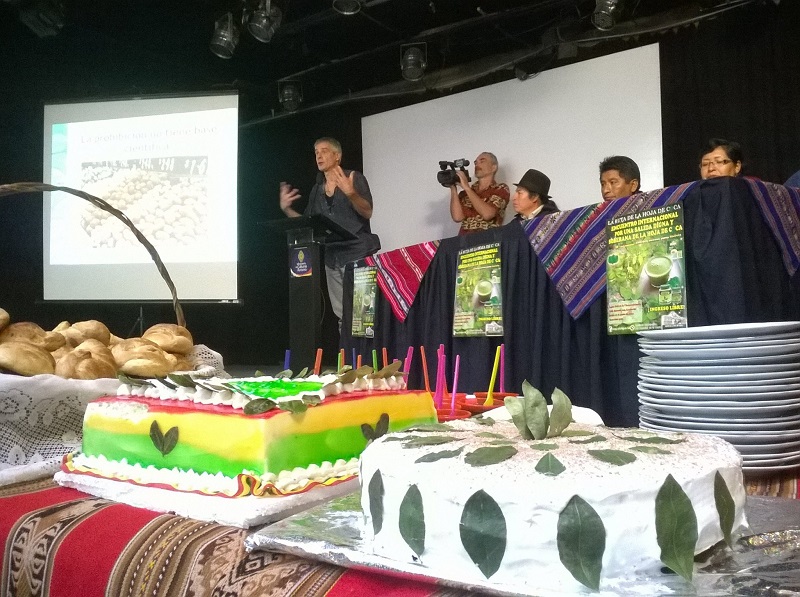
The next day starts with an interview on Channel 7 and then it is time for the Third Meeting for a Dignified and Sovereign Export of Coca which is convened by congresswoman Bridget Quiroga at the Ministry of Culture, with the presence of Vice Minister Pucho, the Ambassador of Ecuador, and about 50 representatives of the movement of coca growers from different areas.
One of the presentations of the meeting is of Gabriele Kozar and Erec Ortmann, who introduce industrial hemp and medicinal values. It is completed by the words of Sarah Schwirten, Brenda Perez, Alejandro Revilla and Joep Oomen, who together make an appeal to the Bolivian government to strengthen its proposal for the international depenalization with more diplomatic weight, based on all the scientific evidence that the Coca leaf has been the victim of a racist injustice generated by private interests. The meeting ends with a delicious tasting opportunity of foods made from coca leaves. After a final interview on Channel 7 we say goodbye to La Paz at the bar ‘La Gota de Agua’ in Illampu street, until dawn …
The next day the group is divided into several parts. To celebrate the Andean Amazon New Year (June 21), Brenda and Sarah move to the Isla del Sol while Beatriz, Erec, Gaby and Joep will be at Tiahuanaco. Olga and Maria retire to Arequipa and Mauricio stays in La Paz.
Thanks to the hospitality of the mayor of Tiwanaku we have a nice night and a wonderful ritual solstice at dawn on June 21 and charged with positive energy we follow the road to Peru.
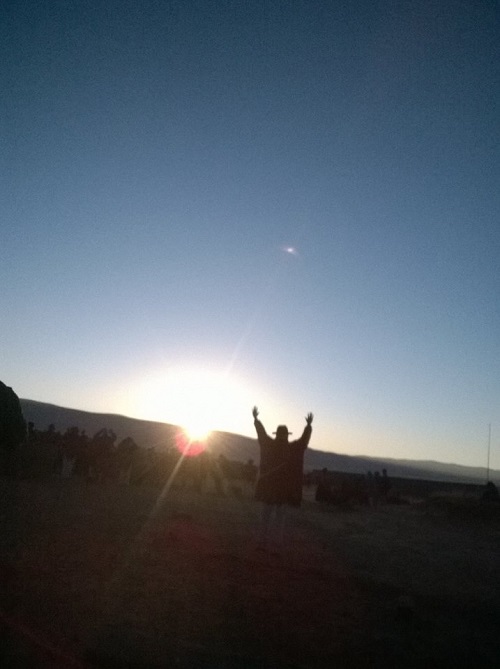
21 to 22 June – Sandia
We pass the border in Desaguadero, where we find Serafin Andres Lujan and Javier Rojas, members of CONPACCP, National Confederation of Agricultural Producers of the Coca Valleys of Peru. Also Dionicio Nuñez and Margarita Patzi of La Asunta join the group. We continue on the bus crossing Puno and Juliaca on the Altiplano and then descending through narrow roads, arriving at Sandia, a beautiful valley, at night. Here we meet a group of producers in the Peasants’ House, and after a short presentation we find our beds in the lodge.
The next day we have breakfast with several representatives of the Federation of Producers of Sandia (including Don Jacinto), who introduce us to the problem of coca producers in Peru.
The Peruvian government since 1978 has established the National Coca Company (ENACO), which has a legal monopoly to buy coca leaves. The problem is that ENACO has become a private company (with government ministers as shareholders) and its purchase price (75 soles (25 euros) per arroba – 12 kilos) barely covers production costs. Interestingly, the illegal market (for drug trafficking) pay the double of this price, and buyers carrying the leaf directly to the traditional market (mining centers, village markets) pay up to 250 soles per arroba of selected and well treated coca leaves.

Sandia is an example of a region that has been abandoned by the state, just as is the case with several regions of coca production. There is no policy of investment into small agriculture, peasants should solve their problems by themselves, and rather fear the threat of forced eradication. From September 2015, the arrival of 3,500 US soldiers to assist in the task of eradication operation throughout Peru has been announced.
After a “payment to the earth” in the Plaza de Armas in Sandia and several speeches of delegates and their hosts we took time to discuss ways of collaboration. In any case we offer our willingness to act when necessary, in case there are human rights violations related to the elimination or the criminalization of social protests. At noon begins the protest strike against various measures taken by the Peruvian government, and the entire town of Sandia is locked off. After a few hours of waiting we get permission to leave and at night we get to Juliaca and at dawn to Cuzco.
23 and 24 June Machu Picchu
We meet Tania and Adolfo Garcia, advisers of the Federation of Producers of La Convención and Lares who will join us in the next phase of the journey. We start with the road to Machu Picchu, through the beautiful valley of the Rio Urubamba. Pausing in Ollantaytambo we enter a shop of tourist souvenirs and are amazed at the number of products derived from the coca leaf: cookies, chocolates, chewing gum, wine and spirits of all kinds, and surprisingly, with health certification (so they can be sold in supermarkets). The seller assures us that ‘this is just what the tourists want’. In the afternoon we reach the hydroelectric station, and a nice walk begins to Aguas Calientes, where the climb to Machu Picchu starts off.
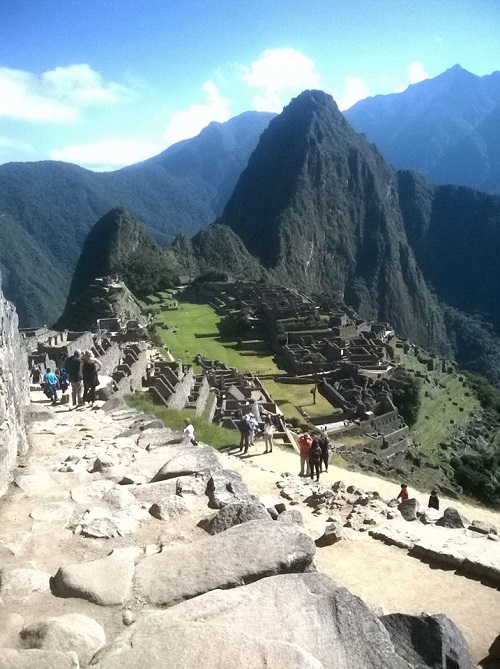
The next day we wake up early, as one should do when you want to appreciate the wonderful citadel of Machu Picchu without suffering the afternoon heat.
Some walk, others take the bus up and join us to enter one of the most wonderful places in the world. Although it is all surrounded by efforts to get money from the visitor, and thus a symbol of the triumph of Western thought on the Andean world, Machu Picchu continues to show the greatness of the Inca culture, which has been able to build an administrative and scientific center in agriculture, astronomy and spirituality in the middle of the mountains. We descend happily and retake the walking path to the hydroelectric station, where we expect the bus to Quillabamba.
25 and 26 June Quillabamba
We are received in the Federation of La Convencion and Lares, where over 50 delegates from the different rural communities in the three regions (La Convención, Yanatile and Cosñipata) have come together. First we march together to the Plaza de Armas of Quillabamba where we hear welcome speeches of the deputy mayor and Dionicio Nuñez. Then the payment to the earth is realized, and we have several discussions with municipal representatives, academics and journalists. We return to the Federation where we share a lunch before holding the meeting.
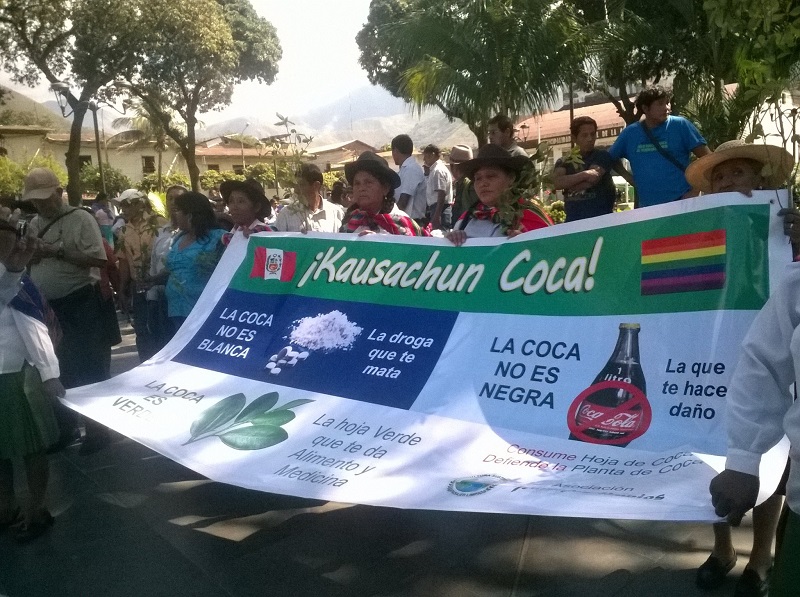
At the meeting Dionicio Nuñez speaks on the experiences of the Bolivian cocalero movement and perspectives for the UNGASS 2016 meeting in New York. Margarita Patzi describes the story of the women cocalero organizations, and the process towards a structural change in the Bolivian situation. Then we talk about the mission of the route, and Don Genaro Ccahuana and Don Beltran, executives of the federation, respond.
The producers of La Convención are considered as legal producers, since most of their crop has always been intended for the legal market. But under Peruvian law there is no concept of ‘legal cultivation’. All cultivation is legal, but the sale should be made to ENACO, which recognizes producers through a system of registration. And many producers lack the registration. There are also micro-entrepreneurs, buyers who industrialize the coca leaf to manufacture products that have a growing market. Even there are many peasants who have started making their own flour, mate, liquor etc. Apparently the control on the sale of coca leaf in its natural state is more rigid than on these derivatives.
In the afternoon, we are interviewed by Radio Quillabamba. The next day we visit to several plots of coca growers, where we witness the work of harvesting, post-harvest treatment, work in nurseries etc. Then we visit the waterfalls (7 Tinajas) and return to Quillabamba where we say goodbye.
June 27 Cuzco
June 27 has been booked by Erec and Gaby to celebrate their Andean wedding in the sacred place of Pumamarka, near Cuzco. We are all witnesses to a beautiful Andean ceremony, which will certainly fill the marriage with good energy.
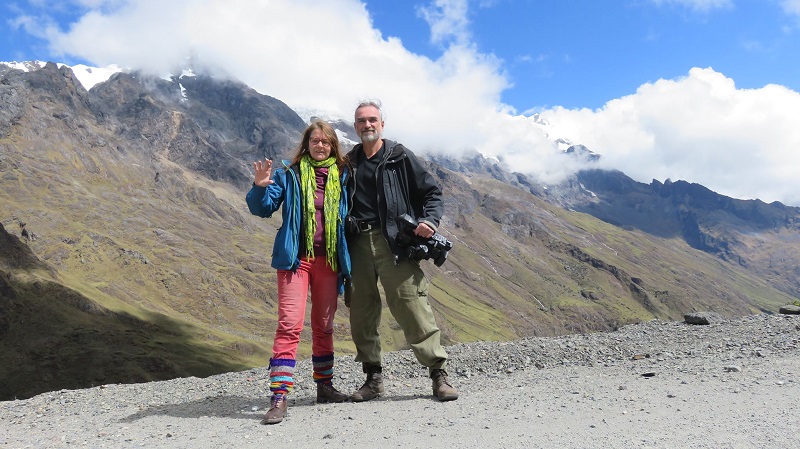
We then return to Cuzco to eat, and a short meeting with Cristobal, one of the entrepreneurs who manufactures coca flour and has extensive experience in promoting it in Peru. Even through camouflaging the contents of the bags (with another label) it can be exported.
28 and 29 June Lima
We wake up early to take the flight to Lima where we meet twenty leaders of coca growers from different regions: the valley of the Apurimac and Ene (VRAE), Upper Huallaga Valley, La Libertad and Marañon, as with the ex- Andean Parliament Member Elsa Malpartida, the expert Baldomero Caceres, and the Bolivian MP Brigida Quiroga. After the ritual we start the first agenda point of the meeting: to contribute to a peaceful solution of the coca issue, in view of the general elections in Peru (to be held in 2016), the danger of militarization, and international developments .
The proposal to dignify the production of coca leaf falls in good earth: it has both the political effect to end the negative stigma of the coca growers and the technical value of converting coca cultivation in organic, which means increasing the added value and offer an alternative to the illicit market. We agree to exchange information to continue to seek a joint strategy for the purpose of obtaining markets for derivatives based on organic coca leaves.
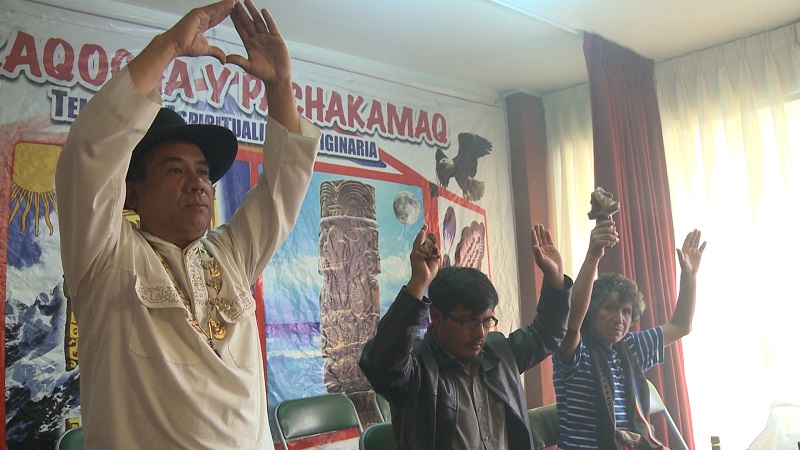
In the afternoon, we meet with several members of the Tahuantinsuyo Community, organizers of the International Forum on the Coca Leaf to be organized for the 7th time in Lima in November this year. We exchange our experiences and agree that opening markets for coca leaf and its derivatives is a decisive step towards a more rational policy. Although there is a repressive climate in Peru and the movement of coca growers is far away from political power, the movement of revalorisation of the coca leaf is backed by many more commercial and scientific initiatives and therefore there is an increasing normalization of coca leaf consumption in society. The political proposal to open the market for traditional derivatives is gaining broad acceptance.
On the final day of the Route we lack one more meeting with Peruvian entrepreneurs who manufacture products based on the coca leaf. We meet with several of them in the center Kuka Hampy Wasy, a center of physical, mental and spiritual therapy in the Lima district of Breña. We get to know the people behind the products that we found in the stores, and chat with them on the possibilities of collaborating with the next step: to ensure that these products play a role in a system of fair and sustainable trade, aimed at presenting them to a European public, while each step of the system will be monitored by an organization of producers and consumers.
Conclusions and Recommendations
After a month of meetings with producers of coca leaf, leaders of their organizations, local and national authorities, academic experts, micro-entrepreneurs and other analysts we conclude that the proposal of the coca leaf as a product to substitute itself is more valid than ever.
Both in Bolivia and Peru, the war against coca has failed. Measures to limit the cultivation in a repressive manner (whether through community social control of the ‘cato de coca’ in Bolivia, either through eradication involving US soldiers in Peru) only make the situation of producers worse. They do not represent any sustainable solution to the root cause of the extension of coca cultivation, but rather oblige the producer to apply counterproductive measures such as the use of chemicals to increase his production or find even less accessible land for farming. Insisting on these measures without offering the coca producer an alternative option to join the legal economy means forcing him to work for the drug traffickers, or starve.
To reduce their dependence on the drug economy, the coca producers need conditions to sell their coca at a decent price, a leaf grown healthily, without exploiting the land, with a treatment that meets the hygiene and health standards in force in the consumer market of natural products. To create these conditions a synergic collaboration should be put in place among all stakeholders: state, entrepreneurs, producers and the international community.

To start with the latter: during our stay in Bolivia the European Union approved a package of 60 million euros for “the Bolivian strategy to combat drug trafficking and the reduction of illegal coca plantations” in the coming years. It would be desirable if instead of using all this money to weapons and uniforms, some could be devoted to resolve the bureaucratic and technical barriers for legal and healthy products made from coca leaves to get from Bolivia to the European market.
For example a program is needed to encourage the organic cultivation of the coca leaf, with appropriate advice at every stage of conversion from conventional to organic, involving academic research centers specializing in the cultivation of the coca leaf, and with the presence of a certification authority that is recognized internationally.
The performance of organic agriculture is more modest than the ‘conventional’. The producer who decides to produce organically hopes to deliver his crop for traditional consumption and not to the illicit market. This sacrifice needs to be compensated, and especially by more affluent consumers who can afford this added value. These consumers are in the high social spheres of Andean societies, and abroad.
The Single Convention on Narcotic Drugs of 1961 has banned the traditional use of the coca leaf, but allows the use in the production of a flavoring agent in beverages (Coca Cola) and manufacture of pharmaceuticals (various Western companies produce legal cocaine). In 1988, a new UN Convention recognizes the right of indigenous peoples in traditional areas to grow and consume coca leaves. Therefore there is a legal market in Bolivia, Peru and (parts of) Colombia, but outside these countries the leaf derivatives remain under a regime of control attached to the Single Convention. The legalization of traditional use in Bolivia that the government of Evo Morales obtained through an amendment to the Convention in 2013, does not change this at all.
The argument for the international depenalisation of the coca leaf is stronger than ever. Apart from several scientific studies that show that the coca leaf has no negative effect on health (including that of the World Health Organization, 1995), there is a UN Convention of 1988 which leaves the possibility open that Andean countries tolerate the traditional use in their country, reason why it is now recognized internationally that this use is legitimate. There is no valid argument to maintain that the traditional use of the coca leaf is healthy in the Andes but dangerous elsewhere. Then there is the Declaration on the Rights of Indigenous Peoples of 2007, which guarantees the right to develop their cultural heritage, and the coca leaf represents the Andean cultural heritage par excellence. Finally there are several resolutions of the European Parliament calling on the European authorities to facilitate the import based on coca leaf with the purpose of promoting legal use.
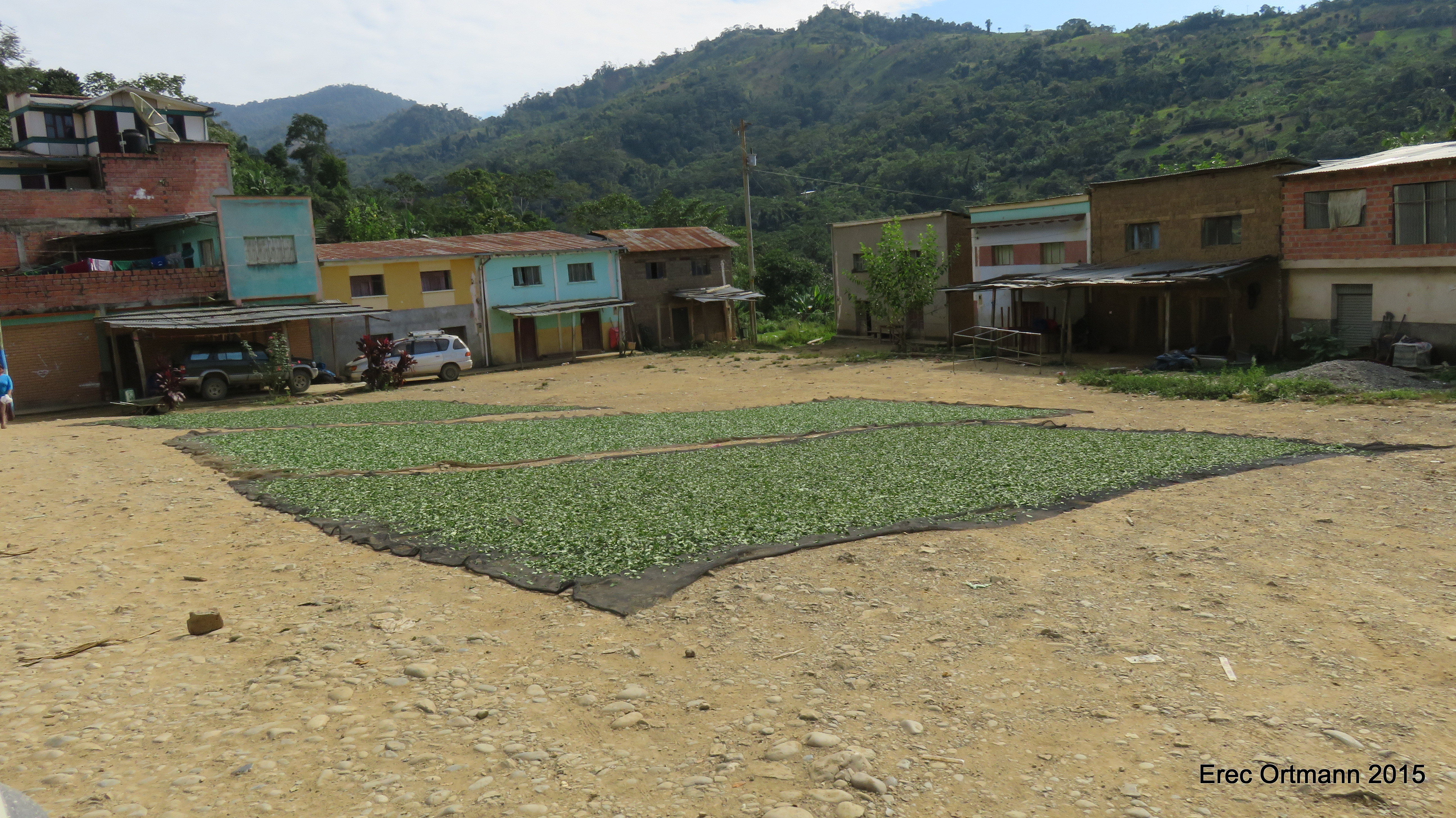
And there is the international situation that suggests that drug policy is less and less based on the 1961 Convention and increasingly on pragmatic considerations of each country.
Therefore we recommend to Bolivian and Peruvian governments to strengthen their ‘coca diplomacy’ with programmes to develop the internal legal market as well as to promote export to international markets. The time is right, just before the UNGASS in New York. It is likely that on this meeting significant changes will be discussed with regard to international drug legislation, since the United States themselves are relaxing their marijuana laws. All global experts know that consuming coca leaf does no harm. Pope Francisco, on his visit to Bolivia in July 2015, took coca without reservation. If countries start to install legal markets for cannabis, but Andean governments continue the repressive policy against coca leaves, they will run the risk of being regarded as more papist than the Pope, with cruel consequences for their populations.
It is also a government’s duty to ensure that the coca leaf, consumed daily by a large percentage of Bolivians and Peruvians themselves, is cultivated and processed in a healthy way.
Entrepreneurs can play a positive role by requiring the producer to deliver organic quality, and properly pay. At least stop using chemicals and ensure that there is detailed information on the ingredients, as is required when exporting products.
In collaboration with the unions of producers, with the centers of legal distribution in Bolivia and ENACO in Peru a system can be established that ensures that a larger percentage of the coca leaf finds its way to the legal market, with prices that are adapted to different social strata.
Even without an international depenalisation entrepreneurs can make progress in the preparation of the export of derivatives with less than 0.1% of cocaine. According to the 1961 Convention these products are not subject to prohibition, but may obtain a license to be offered for sale. Since there are already products with this level of cocaine in the European market (eg Red Bull Cola) Andean entrepreneurs have every reason to demand equal treatment for their products.
Finally, we encourage producers not to lose hope and to remain proud to be producers of one of the most wonderful resources that have existed in world history. Convert coca cultivation in a healthy activity that does not damage either earth or people, and organize themselves to demand their right to live and build a decent future for their children.
The Friends of the Coca Leaf will not rest before having built the ‘Green Bridge’: a dignified export of the coca leaf from the Andes to the world, through the development and export of healthy derivatives following standards of biological agriculture and fair trade. The penalization of the coca leaf is an error, a proof of racist thoughts that have led to the stigmatization and criminalization of cultural practices of the Andean / Amazonian people.
Therefore, in the coming months we will campaign to gather a critical mass of people in Europe who wish to consume coca leaves and derivates, and who are ready to defend their right to do so. We prepare a collective import by members of the Association of a significant amount of coca leaves from Bolivia and of some derivates from Peru to Europe. We will build on an agreement with the unions of the coca leaf producers in both countries, and we expect the support of Andean and European parliamentarians to create this green bridge. We may be stopped by European authorities and will have to face prosecution. We are not afraid. We will present ourselves wherever necessary with the pride of wanting to do justice and breaking the international condemnation of the coca leaf.
Friends of the Coca Leaf
Many Thanks to the following persons and institutions for their crucial collaboration with the Coca Leaf Route
Bolivia
Dionicio Nuñez, Margarita Patzi
Alejandro Revilla, IICC, La Paz
Juan Salvador Hurtado, ICORI, La Paz
Sdenka Silva, Museo de la Coca, La Paz
Jorge Hurtado y Roxana Miranda, Coca Wasi, Coroico
Victor Hugo Aliaga, Mancomunidad de Municipios de los Yungas de La Paz
Raul Choque, proyecto Jatunsacha, La Asunta
Comunidad de San Antonio, La Asunta
Municipios de Coroico, La Asunta, Irupana
Milan Sanda, La Troje, Cochabamba
Albino Paniagua, DIGCOIN
Victor Cadima, Mancomunidad del Trópico de Cochabamba
Marcelo Pinto, Chimore
Susana Fernandez, Asociación de Afectados por la Represión a la Hoja de Coca, Cochabamba
Facundo Zurita, Comité de las 6 Federaciones del Trópico de Cochabamba
Froilan Quiñones, Universidad ‘Casimiro Huanca’, Chimoré
Maria Lohman, COLI, Cochabamba
Brigida Virginia Quiroga, Cámara de Diputados, La Paz
Santos Paredes, Cámara de Diputados La Paz
Luis Lohse, ECOTOP
Gumercindo Pucho, Viceministerio de la Hoja de Coca y Desarrollo, La Paz
Municipio de Tiahuanaco
Peru
Serafín Andrés Luján, CONPACCP
Javier Rojas, CONPACCP
Tania García y Adolfo, FEPCACYL
Gloriosa Federación de Campesinos de Sandia
Gloriosa Federación de Campesinos de La Convención y Lares
Comunidad Tahuantinsuyo
Centro Kuka Hampy Wasy
Comments of delegates
BRIEF COMMENT REGARDING THE JOURNEY TO THE REGIONS OF YUNGAS AND CHAPARE.
Mauricio Mamani P.

The coca leaf, called in the past “sacred leaf of the Incas”, if produced only only for immediate mercantilism, has no future. It will be eradicated by the coca producer himself.
The use of agrochemicals as Tamaron, Murelle, Estermin and Caporal are preferred by growers in the Yungas today, even occasional products as glyphosate, which was left immediately because the damage caused to health of the chewers became public. In Chapare the fashion agrochemicals are Redimil, Explosive, Tocoron and Chagres, what others will they have tried? It is kept secret but some speak of Caporal.
Moreover: Chapare coca growers want to pay taxes on coca production and the Yungas resist the idea. Faced with this reality the government itself does not know how to act because the 1008 Law distinguishes between legal and illegal coca. In the Yungas of La Paz legal coca areas are: Coroico, Coripata, Chulumani and Irupana, and illegal areas are La Asunta and Caranavi. In Cochabamba, coca cultivation in Chapare is all illegal. The tax must be only for legal and not illegal producers. If not you have to change the law, and for that purpose the government works with people who have no knowledge and are unable to face problems.
About the excellent approach concerning the depenalization of the coca leaf, it will never happen, because there are no people who can take on this responsibility, it requires a clear and precise understanding of the way that led to coca leaf imprisonment. The blame for that was a methodological error committed by a pseudoscientist and therefore we have to correct and scientifically demonstrate the true reality of coca in order to release it.
The arrival in Bolivia and Peru of the European “Friends of the coca leaf” is a blessing to correct the wrong way they has been undertaken by the cocaleros. The solution is to enter the growing of organic or ecological coca and stop completely the use of agrochemicals.
To fumigate coca does not serve any purpose, perhaps only for the “illicit agribusiness”. The coca growers in both regions – Chapare and Yungas – are settlers, they know nothing of coca, so they must be educated and / or enabled to not continue on the wrong path which they may regret in the future.
La Paz, Bolivia, 10 July 2015
SUMMARY OF EXPERIENCES IN THE COCA LEAF ROUTE
Brenda J. Perez Mendoza
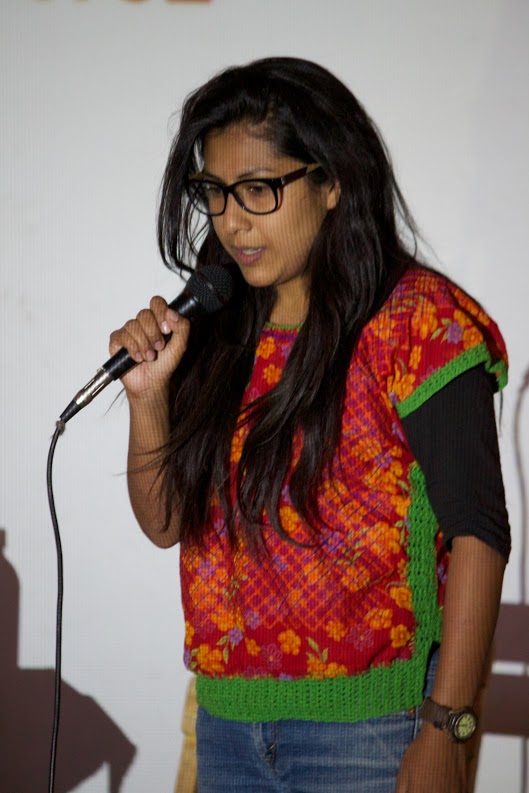
At the beginning of the route I had the opportunity to represent the group in a union meeting in La Asunta, a coca production area in the Yungas of La Paz. They discussed the contents of the new General Law of Coca which will replace the 1008 Law, which is currently in force. This proposal aims to establish a different legal regime governing the control of drug trafficking and in line with the constitutional mandate to revalorise the coca leaf.
This initiative is being discussed in the areas of production, providing the plural character required by law.
The discussion centered on the following points:
a) The distribution of hectares in areas of current production.
b) The social control over the production, concerning the community control to prevent illegal activities related to the production of coca leaf.
c) The commercialization and industrialization.
d) Regulation of foreign trade of coca, for example to northern Argentina.
In the Yungas of La Paz the effort to implement measures of organic coca production has been remarkable through composting and finding alternatives to combat pests without the use of highly toxic chemicals. We have also witnessed the search for certifying organic crops.
This process has been accompanied by specialized technicians, however, staff capacity is limited, according to Raul Choque, of the project Jatun Sacha in La Asunta, to 10 agronomists who need to train 42 communities with approximately 1600 families.
In the Tropics of Cochabamba, attendance at mass meetings has given me an overview of current concerns such as the new distribution of hectares of coca cultivation as well as the challenges of organic coca production. Moreover, after the visit to the Quechua Indigenous University in the Chapare, we concluded that there is a separation of these concerns with the studies carried out in universities; of the total student population of Agronomy and Engineering in Food and Agriculture, there was only one developing a thesis on the coca leaf.
The route included a significant experience in the exchange of knowledge in seminars in La Paz and Cochabamba. We have seen the impact caused by the presence of the members of the Route to the public through the dissemination of our objectives in different media at national level; it has revitalized an outstanding discussion of the use and consumption of the coca leaf and the current control of plants and substances called drugs.
FUTURE RECOMMENDATIONS
• Develop agro-tourism, for example in Coroico which could include a visit to the Coca Wasi Center.
• Increase the presence of specialized technical personnel in the areas of cultivation of the coca leaf to ensure organic production.
• Reactivate the process of certification of organic coca and strengthen the institutions responsible for granting such licenses.
• Encourage the production of knowledge on the coca leaf, through: a) Creation of study centers and linking existing centers in production areas with the study of existing problems b) Creation of a system of scholarships, and support to research on the coca leaf in different areas.
• Investigate the potential of the Argentine market for the coca leaf through a census of consumers (currently nonexistent). The revitalization of this historic market provides opportunities to promote a dignified export of the coca leaf.
PERSONAL ASSESSMENT OF THE ROUTE
The route of the coca leaf has been an integrative experience of diverse knowledge. I could exponentially increase the information I had about the production process of the coca leaf. The problems that farmers have in this process and subsequently at the time of marketing have led me to increase my understanding of complex and fascinating realities.
My assessment is positive in terms of the empirical approach to the world of coca, after visiting the field and being able to listen to farmers, as well as observing the craftsmanship required by this culture. I have increased my commitment to find alternatives for the release of the coca leaf internationally. The route brought us into contact with knowledge that exceed expectations and scholars interested in the subject.
On a personal level the route has allowed me to deepen reflection on world problems around drug control. In the Bolivian case, to account for the social, cultural, historical dynamics around coca brings me arguments to demonstrate the failure of the current regime and the expiration of a control system that maintains military control in Latin America. Hopefully the route of coca leads us to the end of a regime which currently affects countries like Mexico, hopefully the Bolivian population boosts this process of change that inspires many others, and the coca leaf may leave the heart of South America to the world.
NOTES ON THE NORTH OF ARGENTINA *
The knowledge I gained on the route of the coca leaf allowed me to understand some elements of consumer dynamics in northern Argentina, which is extensive and exclusive. This is a topic that could be included in the agenda of the next route. After visiting some cities in the region I could see the intimate social and cultural relations with Bolivia, however, there are some aspects that distinguish and characterize the coca trade, such as the wide range of products that exists, which has led to the creation of a niche market.

Coca leaves offered in Catamarca, Tucumán, Jujuy and Salta are divided into several categories: common, selected, treated, with those containing a seal of origin of the Yungas being privileged. The supply of coca is a careful chosen selection work done almost leaf by leaf, size, color, and texture care. The current price of this product in the market of the old terminal in the city of Jujuy (one of the largest markets of the coca region), is ARS $ 160 (usd $ 15) per 250 grams, while the same amount of common coca (not selected coca in some cases, dry, chapped or dark) costs ARS $ 75.
Finally, selected coca (chosen coca from which the stick has been eliminated) costs ARS $ 300. According to the sellers of the same market, the most consumed coca is the selected coca. The supply of this selected coca begins in the Bolivian border city of Villazon, the price is $ 7 per 250 grams.
In northern Argentina consumption is widespread, with variety between consumers, though predominantly male, both farmers, transporters, members of the institutional political spheres, as well as deputies, or the traders called Turks.
Since 1989, Argentinian legislation protects the possession and consumption of coca leaf in its natural state.
However, in the absence of the crop in the country ambiguity on supplying the leaf arises giving way to illegal trafficking; this allows the authorities at various levels such as customs and the provincial and local gendarmerie to maintain an underground economy on a product of daily consumption, in which caseritas (sellers of coca leaf) are paying informal taxes to be allowed to sell.
The market for selected coca consumption in this powerful coca region is an opportunity for organic farming to be promoted from Bolivia.
Finally, the creation of a regional trade agreement between Bolivia and Argentina, would set the tone for breaking the UN international Ban on the coca leaf and achieve a dignified export.
* The research in northern Argentina was made possible by the National University of Jujuy, particularly by Dr. Enrique Cruz.


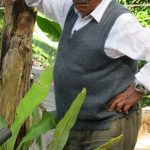
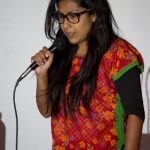
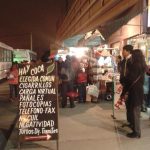
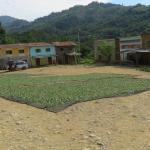
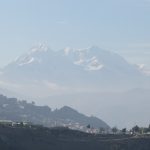


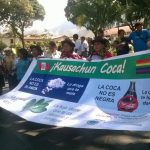
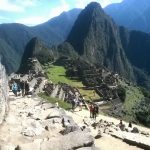
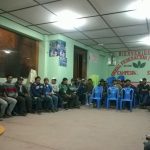

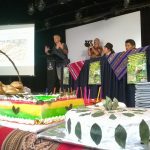
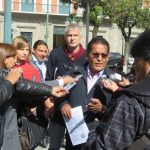
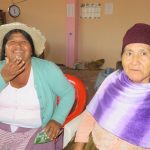
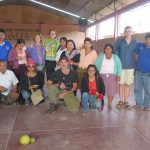
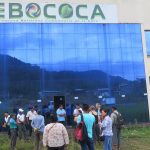
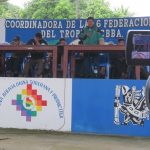



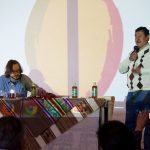


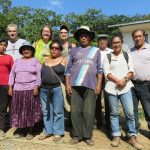
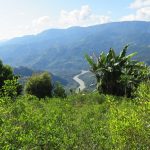
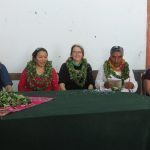
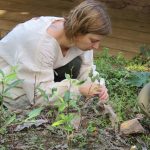
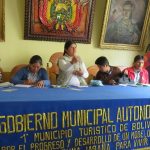
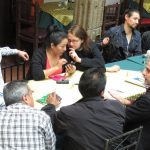
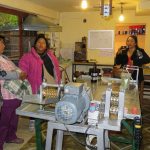
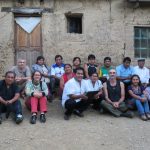
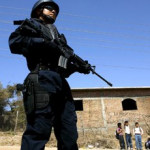
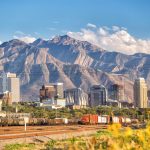
 Creative Commons Attribution
Creative Commons Attribution